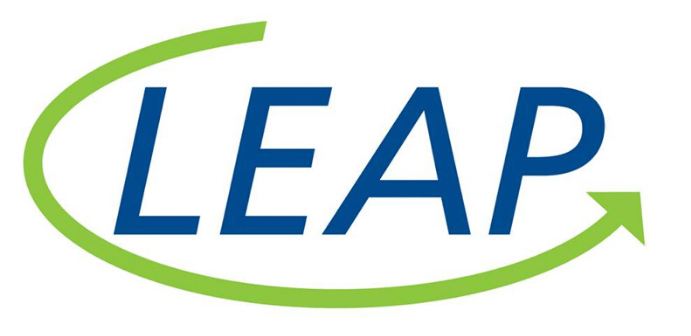Why Advocate?
Posted on 03/14/24 in Advocacy
Built on the philosophy of individual choice and control, LEAP believes in helping people with disabilities to help themselves, and helping others understand how to support people with disabilities. We do this through various levels of service and advocacy.
Types of Advocacies:
1. Individual Advocacy
Individual advocacy involves representing an individual with a disability, often because they do not have the resources to advocate for themselves alone. Individual advocacy occurs when we represent someone before private entities or organizations, and local, State or Federal government agencies. Individual advocacy involves speaking on behalf of the individual to secure goods and services that they need, and for which they are eligible. We do this through our Access to Benefits and Resources Services, Employment Services, and Independent Living Services.
2. Self-Advocacy
People with disabilities are their own best advocates. To be a self-advocate one needs to be able to identify their needs, communicate them clearly, and help others understand how they can best provide support. Being a self-advocate takes learning, planning, and practice.
The process of Self-Advocacy:
- Self-advocates learn how to identify their needs.
- Know what decisions they want to be able to make for themselves.
- Learn how to speak up for themselves.
- Learn about their rights as an individual with a disability and understand their responsibilities.
- Understand who will support them, and who has the power to make decisions and changes that will benefit them.
Self-advocacy is effective at school, at work, at medical appointments, and in the community.
LEAP helps by educating persons with disabilities and the community about the legislative process, which can include introducing them to the legislators who represent them.
3. Systems Advocacy
Systems advocacy is also known as public policy. With systems advocacy we can address the systemic barriers that prevent people with disabilities from fully participating in the community. Individual advocacy and self-advocacy are focused on the individual level. Systems advocacy is a planned action to support an issue, interest, cause, or idea. It occurs with, and on behalf of, the population of persons with disabilities. Armed with the constitutional rights of people with disabilities, advocates use these rights to promote justice, equity, and inclusion.
Systems advocacy can include:
- Non-partisan analysis of a bill or law that provides sufficient information to allow people to come to their own conclusions about its impact on their lives.
- Meeting with policymakers to provide information about the barriers people with disabilities face because of legislative policy, regulations, or practices, and how those barriers can be removed with a change in policy.
- Providing technical assistance and/or testimony to a legislative body, committee, or subcommittee around issues that are being discussed.
- Participating as a member with disability expertise on governmental committees, councils, or commissions.
Effective Strategies for all levels of Advocacy:
Planning, practice, patience, and persistence are essential steps for building trusting relationships with decision-makers. When efforts are backed with the ability to communicate disability rights knowledgably and factually, along with individual and/or local data about disability issues, respect and a positive rapport is built.
By engaging a wider audience of people with disabilities, their family members, and allies, we can raise awareness, build widespread support, shape public policy, and improve the quality of life for individuals with disabilities.
Impact of Advocacy:
Individual advocacy allows an individual’s needs to be heard and met through a collaborative representation of their needs and rights to individual and organizational decision makers.
Self-advocacy empowers an individual with a disability to effectively communicate their needs and rights to individuals and entities who hold the power.
With careful planning and implementation, advocacy on a systems level allows us to inform public policy and create positive change. Systems advocacy brings the disability voice to all decision-making tables.
My experience has taught me:
Policy change is a very slow process, and it is essential to focus upon building long-term relationships to achieve long-term success.
These steps are critical:
- Know your audience. Research the person you are going to communicate with to learn their position on issues that are important to you.
- Provide clarity of the issue and/or needs. Educating policy makers about a particular issue is extremely important. Never assume they know all about your issues.
- Deliver effective, respectful, communication of the negative and positive impact of decisions made by those who hold the power.
- Participate in hearings and provide written or in-person testimony.
- Pursue a clear “ask.”
- Work in partnership with other supporters of your issue.
- Demonstrate a continuous attitude of gratitude, regardless of outcome – this shows an understanding of potential roadblocks and can also communicate a message of persistence.
This past year I was able to work in collaboration with my peer Directors of Center’s for Independent Living to increase the line item in the State budget to support Independent Living Centers. For many years I have met with members of the Ohio legislature. Along with other advocates we shared with them the barriers that people with disabilities face in living in the community, in finding work, accessing public benefits, and finding affordable accessible housing and transportation.
The increase in funding last budget occurred with the support and championship of Senator Romanchuk and Senator Dolan along with other supporters of Independent Living in the legislature. This success was the culmination of years of relationship building, clear communication and explanation of the needs of people with disabilities, and a culture of gratitude and persistence.
By Melanie Hogan, Director of Public Policy, and External Affairs at LEAP



